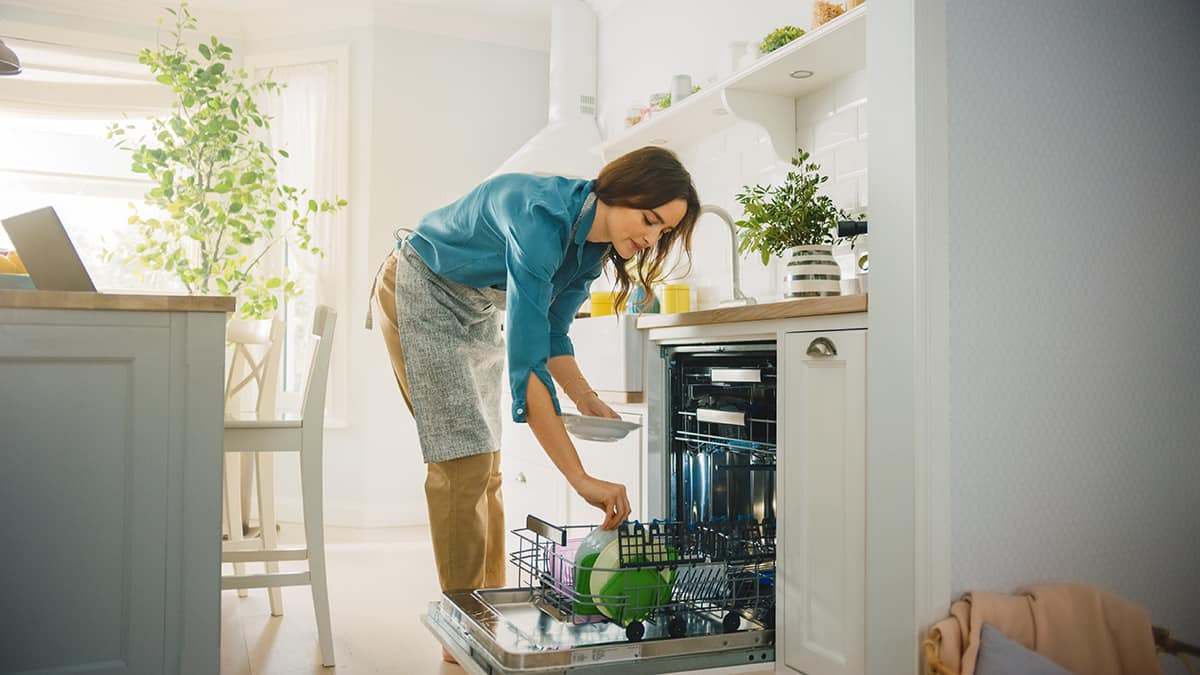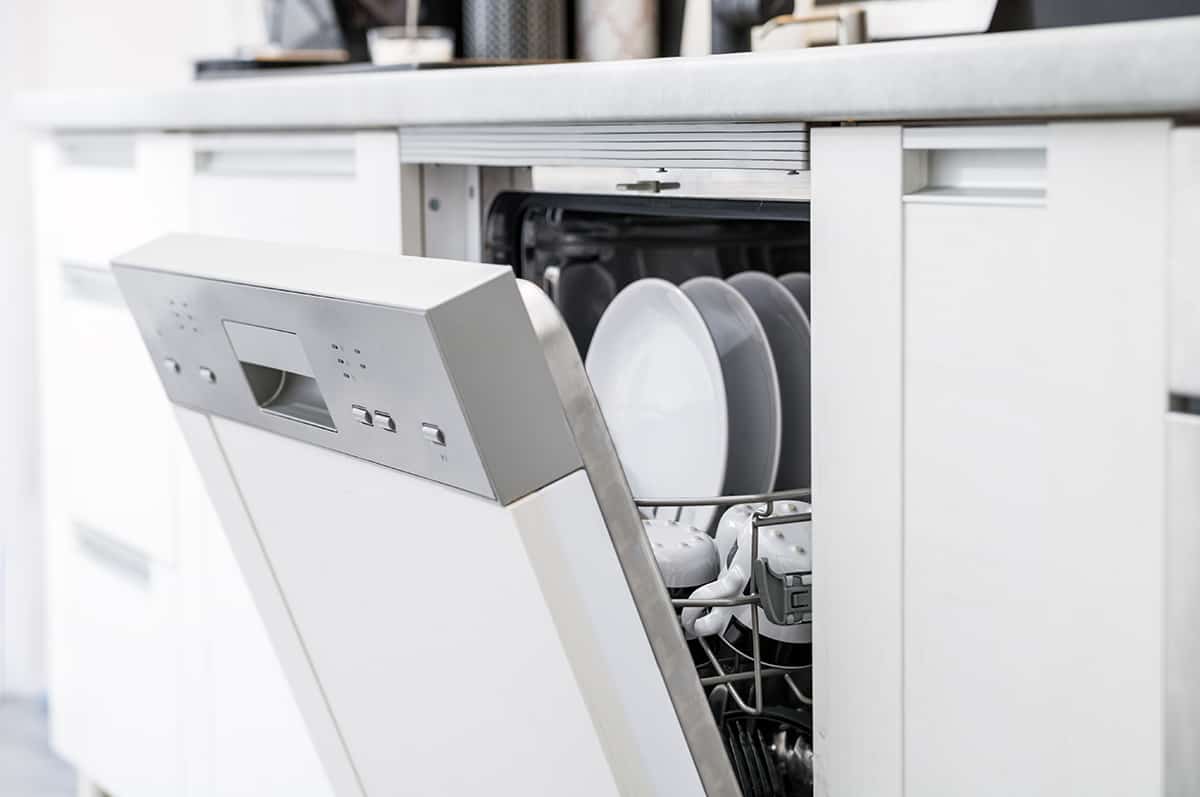Dishwashers, as convenient as they make our lives, can be a pain to install. This is especially true when you try to fasten a dishwasher to the side of the cabinet. In most cases, dishwashers are fastened to the underside of a countertop, but if you want added security, you should mount them to the side of your cabinet, too. But just how do you do this?
To secure a dishwasher to the side of a cabinet, you will need to pick up a set of side mounting brackets; otherwise, you can utilize the countertop bracket on the side of the appliance.
The mounting process can be a bit tricky, especially if you don’t have the necessary tools on hand. In this guide, I’ll explain in detail how to secure a dishwasher to a cabinet, how to position it correctly, and whether or not you should do the deed.
Why Should I Secure a Dishwasher to the Cabinet?
There are several reasons why your dishwasher should be anchored to the side cabinets apart from aesthetics. First and foremost, securing the sides of your dishwasher to the side cabinets will ensure the machine doesn’t tip forward.
Many times, dishwashers mounted to the underside of the countertop will tip forward whenever the door swings open. This isn’t just highly annoying, but it also poses a safety risk to both the user and the machine. In the event the top mounting bracket fails, the machine will have 2 additional mounting brackets on the side to stop it from moving around.
Of course, if your dishwasher is securely fastened to the countertop, then you won’t need to mount the machine to the side cabinets. However, if you do not want to damage your granite or marble countertop with top brackets, you can opt for side brackets to keep the machine from moving around.
How to Secure a Dishwasher to the Cabinet?
Securing a dishwasher to the side of a cabinet can be done in 4 steps. However, before you begin fiddling with the back and sides of your dishwasher, make sure to disconnect the machine beforehand.
If, for whatever reason, your dishwasher is hardwired to your home’s electrical system, flip the circuit breaker off. Make sure there is absolutely zero electricity going into the machine since we don’t want anyone to get shocked in the process of mounting their dishwashers.
In addition, you should also disconnect all pipes and hoses if they are in the way. You will have to move the dishwasher around, and forgetting to disconnect the hoses may cause them to disconnect, kink, or fall apart.
Things You Will Need
- Compatible bracket system
- Measuring tape
- Wrench
- Power drill
- Carpenter’s level
5 Steps for Securing a Dishwasher to the Cabinet
Measure the height and width of the cabinet opening where your dishwasher will go. The vertical distance will be used to find the position of the screw holes on the brackets.
Install the mounting brackets onto the side of your dishwasher. You can usually find the bracket slots on the top-front corners, but the exact position will vary from model to model. You might also have to remove the plastic caps that cover the slots. Make sure to keep the caps in a safe place in the event that you want to move the dishwasher to another location in the future.
Slide the dishwasher into the cabinet. The dishwasher’s tub should sit ¾ of an inch from the front edge of the adjacent cabinets.
Open the dishwasher door and make sure that it is level. Place the carpenter’s level on top of the opened door. If it’s not level, use the wrench to slowly turn the adjustable feet of the dishwasher until your carpenter’s level is perfectly parallel to the ground. Leave the door open for the following step.
Use the power drill to drill holes into the side cabinets. The screw holes should be perfectly aligned with the mounting bracket found on the side of your dishwasher. Use the mounting screws to drill from the inside the cabinet into the mounting bracket. Finally, shut the dishwasher door and check for wiggling. If it moves, you will need to repeat steps 4 and 5.
Positioning the Dishwasher

There are a few questions that people ask about how to position the dishwasher relative to the adjacent cabinets. For instance, how deep should the dishwasher be and how much space should there be between the top of the machine and the countertop? I’ll answer these questions below.
How Deep Should the Dishwasher Be?
Ideally, your dishwasher will stick out from the base of the cabinets by 1.5 inches or so. Another way to put this is that the front of the dishwasher unit—not the door—should be flush with the front edges of your side cabinets.
While positioning the dishwasher to sit flush with the front panels of the adjacent panels might look nice, doing so will prevent steam from venting properly, which can lead to mold growth in the dark recesses of inside the cabinet.
In addition, leaving space behind your dishwasher will allow you to inspect the back when performing simple maintenance tasks, such as checking the water inlet valve and unclogging the drain line.
However, the is a legitimate reason why you should install the dishwasher to sit flush with the flanking cabinets, apart from just looks. If the dishwasher’s door sits flush with the cabinets, you limit the risk of accidentally bumping into the machine while maneuvering your way around the kitchen. That said, you will have to find a way to get rid of excess steam, such as installing side vents to the inside cabinet walls.
How Much Space Between the Top of the Dishwasher and Countertop?
You should leave at last ½ to ¾ of an inch of clearance between the top of your dishwasher and the underside of your counter. This will create a vent for steam to escape instead of building up in the back and creating the perfect breeding grounds for mold and bacteria. You should adjust the height of the feet levelers to allow for this vertical clearance.
That said, it’s not always necessary to leave such a gap between the dishwasher and countertop. This is especially true if you already have steam vents on the interior walls of the side cabinets or another system for removing steam buildup inside and around your dishwasher.
How High Should the Dishwasher Be?
The height of your dishwasher ultimately depends on the setup of your cabinet. If the cabinet doesn’t have risers, then you can leave the dishwasher on the floor, making sure that it sits level with the floor.
On the other hand, if there are risers, then you will either have to remove them from inside the cabinet or lift the dishwasher to sit atop the risers. In both cases, you will have to put in a bit of manual labor.
Essentially, you are free to position the dishwasher as high or as low as you want. One benefit of a raised dishwasher is that you won’t have to bend down as far to insert and remove dishes from the tub.
Who Can Secure a Dishwasher to the Cabinet?

For the most part, you don’t need a set of unique skills or even in-depth technical know-how to mount your dishwasher to the side cabinets. As long as you can follow the instructions on this guide, the owner’s manual, or on the mounting bracket’s packaging, and if you have the right tools to do the job, then you do not need to call a professional to do the deed.
On the other hand, if you’re unsure of whether or not you can do it, then you should probably reach out to someone who knows what they’re doing.
After all, you will need to drill holes into the side cabinets, and if you mess up the alignment somehow, you will end up with more holes than you need. The silver lining is that the extra holes can serve as steam vents to bring moisture from behind the machine to the side cabinets.
The greatest news of all is that if you pick up the mounting brackets from a large hardware store, you might be able to hire a professional to install them for you. Many places offer installation services for more than just installing dishwashers—you can ask them to hook up the machine to the side cabinets for little to no extra charge.
When Should I Anchor My Dishwasher to the Cabinet?
It’s entirely up to you. However, I recommend doing so the moment you take the machine home with you.
The sooner you secure the dishwasher to the underside of a countertop or the sides of kitchen cabinets, the safer the kitchen environment becomes. Even though there’s nothing inherently wrong with using a freestanding dishwasher, there’s no telling when it will begin rumbling and possibly fall forward or dance out of the kitchen.






